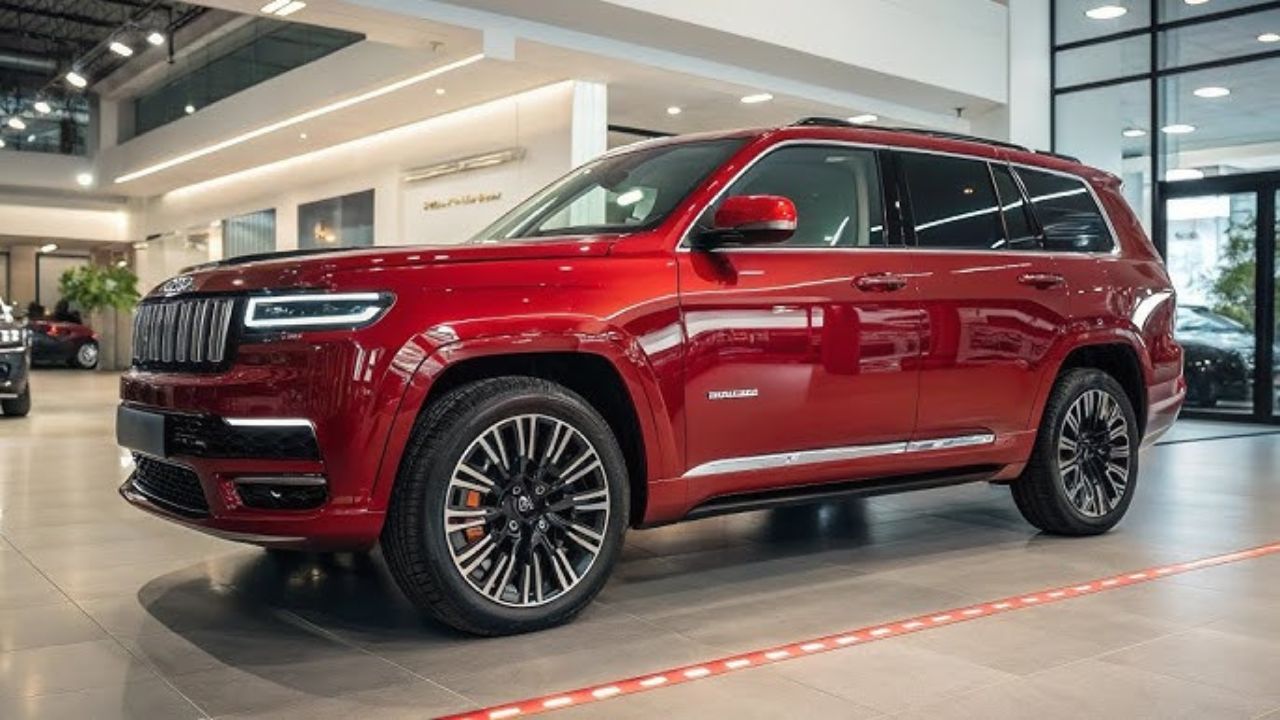
The 2026 Jeep Grand Wagoneer is set to introduce a V6 range-extended electric vehicle (EV) powertrain option, offering a total driving range that exceeds 500 miles on a single tank and charge. This innovative system combines electric propulsion with a gasoline V6 engine that acts as a generator to extend range without direct drive. This update positions the full-size SUV as a more versatile choice for long-distance travel in an increasingly electrified automotive market. Source.
Announcement of the 2026 Model Update
The announcement of the 2026 Jeep Grand Wagoneer with its new V6 range-extended EV option has generated significant interest among automotive enthusiasts and industry experts. This development builds on Stellantis’ previous explorations into hybrid technology, marking a strategic shift towards electrification in Jeep’s luxury lineup. The Grand Wagoneer serves as the first application of this technology, setting a precedent for future models. The public response has been largely positive, with many praising Jeep’s commitment to innovation and sustainability.
Jeep’s strategic pivot towards range-extended EVs is a calculated move to enhance its luxury offerings. By integrating this technology into the Grand Wagoneer, Jeep aims to cater to consumers seeking both luxury and efficiency. This approach aligns with broader industry trends towards electrification, as automakers strive to meet increasing regulatory demands and consumer expectations for environmentally friendly vehicles.
Jeep executives have highlighted the development timeline leading to the 2026 model year, emphasizing the rigorous testing and refinement processes involved. The introduction of the V6 range-extended system reflects Jeep’s dedication to maintaining its reputation for rugged capability while embracing modern technological advancements. This balance of tradition and innovation is crucial as Jeep navigates the evolving automotive landscape.
Technical Breakdown of the V6 Range-Extended System
The core mechanics of the 2026 Grand Wagoneer’s V6 range-extended system involve a gasoline engine that functions solely as a generator to charge the battery, while electric motors handle propulsion. This setup allows the vehicle to operate primarily on electric power, with the V6 engine providing additional range when needed. This design not only enhances fuel efficiency but also reduces emissions, aligning with global environmental goals.
The estimated electric-only range before the V6 engine activates is a key feature of this system, contributing significantly to the overall 500+ mile range. This capability ensures that drivers can enjoy extended periods of electric driving, reducing reliance on gasoline and lowering operational costs. The seamless integration of the V6 engine ensures that the transition between electric and extended modes is smooth, maintaining the Grand Wagoneer’s performance standards.
Battery capacity and charging specifications have been optimized to support the extended range without compromising the vehicle’s towing or off-road capabilities. This ensures that the Grand Wagoneer retains its status as a versatile and capable SUV, suitable for a variety of driving conditions. The focus on maintaining performance while enhancing efficiency is a testament to Jeep’s commitment to delivering high-quality vehicles that meet the needs of modern consumers.
Performance and Efficiency Improvements Over Prior Models
Compared to previous gas-only models, the 2026 Grand Wagoneer’s V6 range-extended EV option offers a significant improvement in driving range, exceeding 500 miles. This marks a substantial efficiency gain, particularly for highway and adventure driving, where extended range is crucial. The ability to travel longer distances without frequent refueling stops enhances the vehicle’s appeal to consumers who prioritize convenience and efficiency.
Fuel economy projections for the hybrid setup indicate a notable reduction in emissions and cost savings for owners. By transitioning from the outgoing V8 engines to the more efficient V6 range-extended system, Jeep is addressing consumer demand for more sustainable and economical vehicles. This shift not only benefits individual owners but also contributes to broader environmental efforts to reduce the automotive industry’s carbon footprint.
The system’s ability to maintain the Grand Wagoneer’s power output while ensuring seamless transitions between EV and extended modes is a critical aspect of its design. This ensures that drivers do not experience any loss of performance, preserving the vehicle’s reputation for power and capability. By combining efficiency with performance, Jeep is setting a new standard for luxury SUVs in the electrified era.
Market Implications and Availability
The introduction of the V6 range-extended option in the 2026 Grand Wagoneer offers significant benefits for consumers, particularly those who frequently embark on family road trips or require towing capabilities. The extended range positions the Grand Wagoneer as a strong competitor against rivals such as the Cadillac Escalade IQ, which also targets the luxury SUV market. This strategic positioning is crucial as Jeep seeks to capture a larger share of the growing electrified vehicle segment.
Expected pricing and trim availability for the V6 range-extended option will be key factors in its market success. By offering a range of configurations, Jeep can cater to diverse consumer preferences and budgets, enhancing the Grand Wagoneer’s appeal. The pricing strategy will play a pivotal role in determining the vehicle’s competitiveness and accessibility to a broader audience.
Production plans at Stellantis facilities are underway, with potential rollout timeline changes reflecting the company’s commitment to meeting its electrification goals. As Jeep continues to expand its electrified offerings, the successful implementation of the V6 range-extended system in the Grand Wagoneer will serve as a benchmark for future models. This development underscores Jeep’s dedication to innovation and its ability to adapt to the evolving demands of the automotive market.